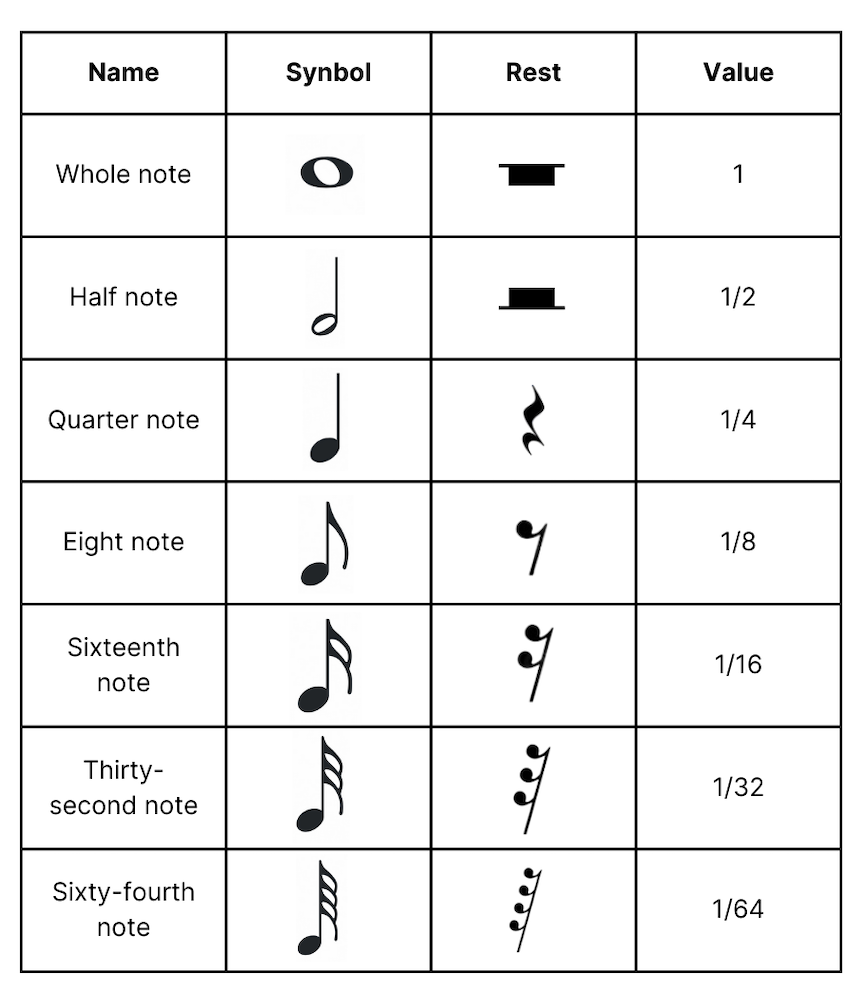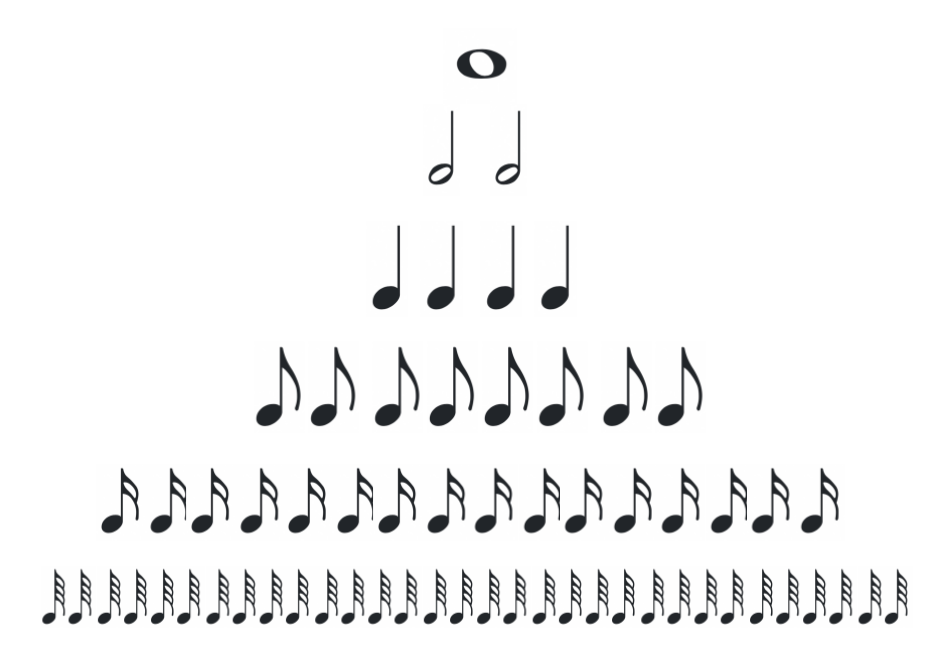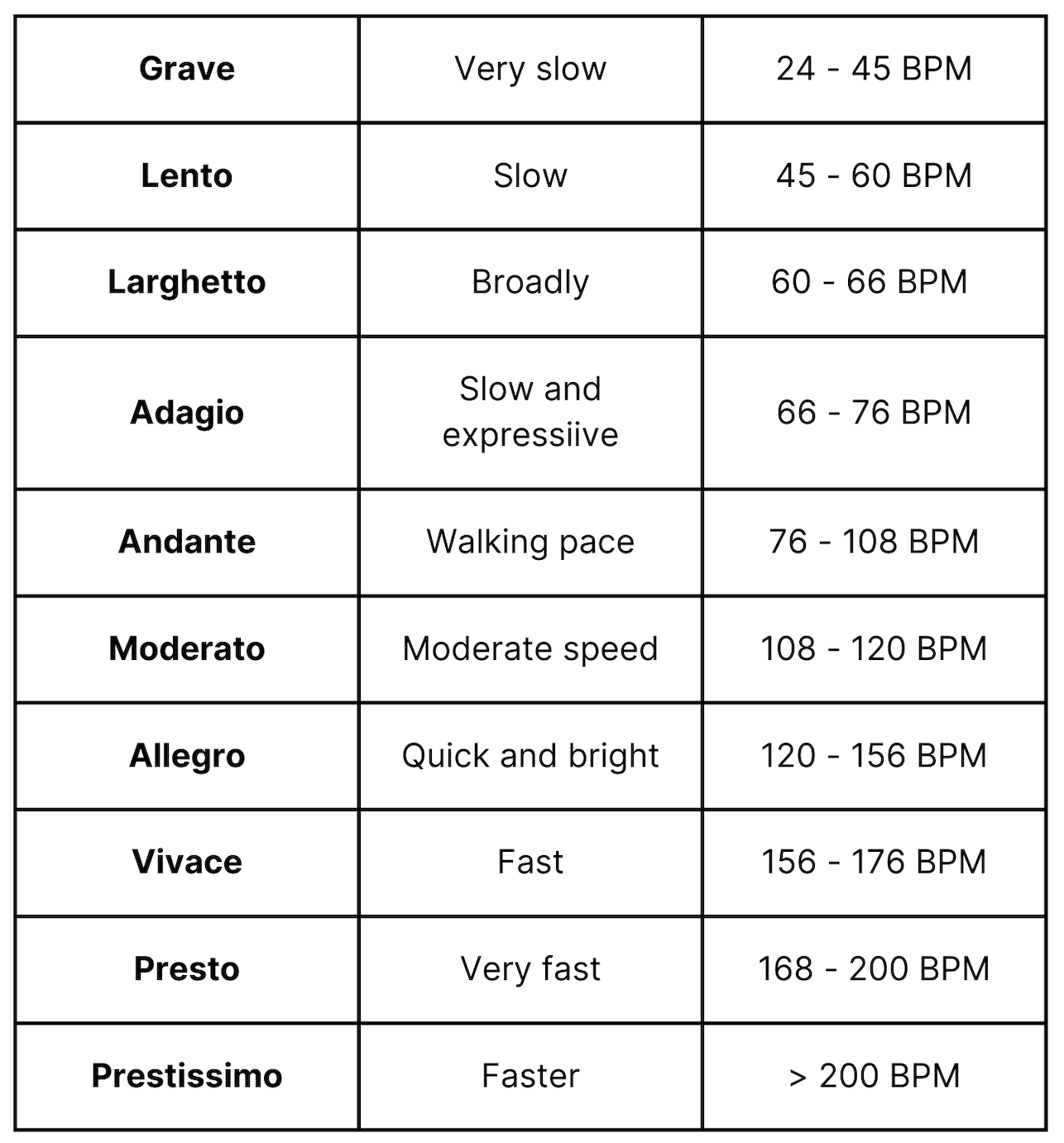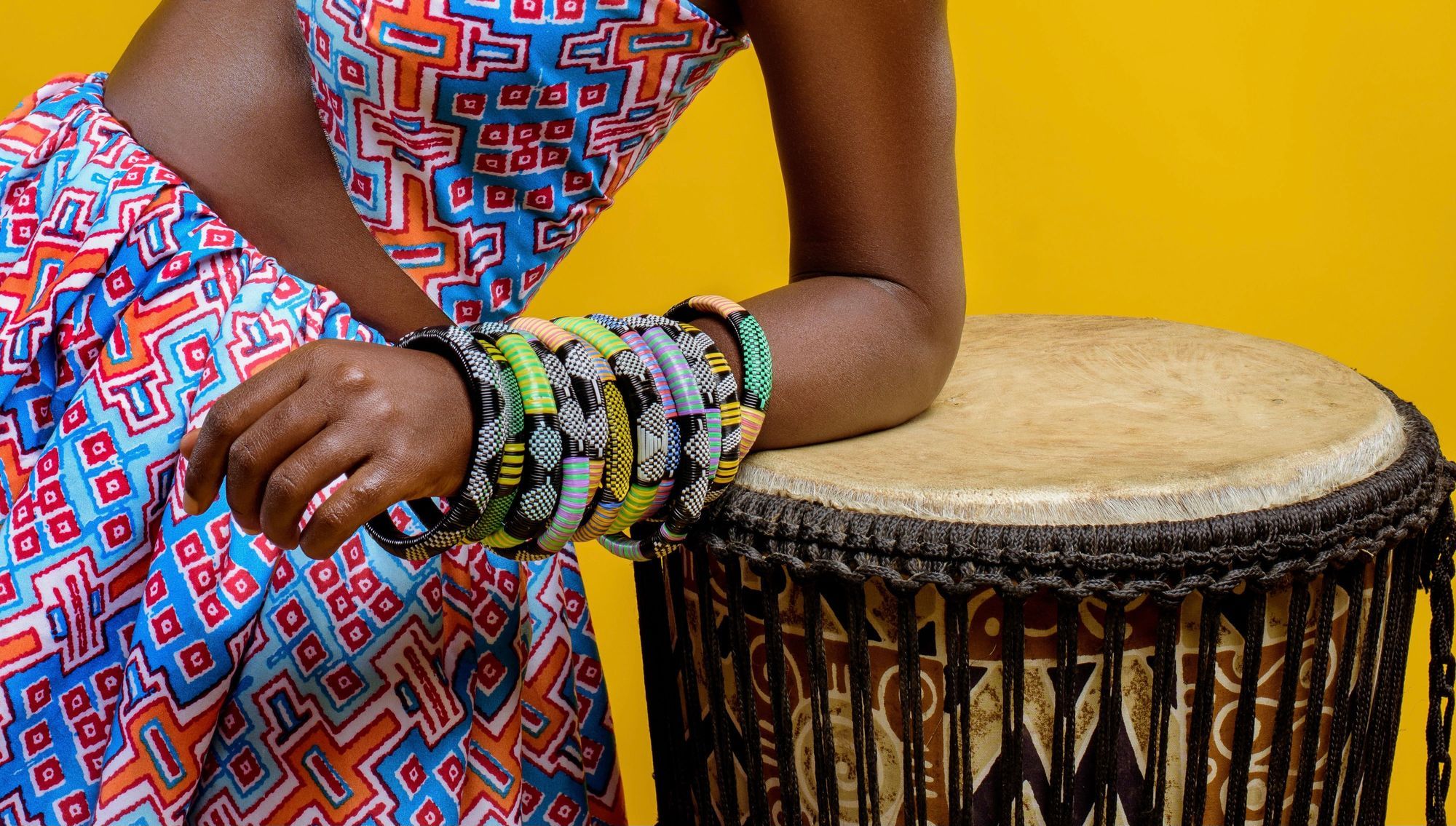Rhythm is an integral part of our daily lives, present in almost everything we do. Whether we are walking down the street or having a conversation, we are constantly surrounded by rhythms. They occur in the pulsating beat of our heart, the sound of our breathing, and even our footsteps. Rhythm is all around us, yet it tends to lull us into a place where we live our lives largely unaware of its presence.
When it comes to music, though, rhythm is a key area that composers focus on. In a nutshell, in music the rhythm is a group of sounds of different durations that create patterns.

By the way, that means rhythm can absolutely exist without pitch. In its most basic form, it only requires sounds with different durations.
📚 We've put a quick recap of the music concepts discussed here in our glossary at the end of this article!
To demonstrate that rhythm can exist without pitch, listen to this example I created using a music notation software:
While rhythm doesn't necessarily need pitch, by adding pitch to a rhythm, we'll get a melody. Let's create another example in Flat to see the progression.
Only rhythm:
Rhythm + pitch:
🤩 Magical, isn't it?
But let's not get sidetracked – back to the topic at hand. Rhythm can be thought of as the backbone of music, providing structure as it organizes the sounds and melodies of a given piece. It allows sound to flow and take shape, creating a sense of unity and coherence.
Rhythm is so important that if we change the rhythm of a certain melody, you won't even recognize the melody anymore. Don't believe me? Here's an example: if we change the rhythm of Beethoven's "Ode to Joy," it becomes difficult to recognize one of the most famous songs of all time.
Neat trick, right?
How to write a rhythm down
In music notation, we use symbols to represent the duration of a sound, called rhythmic figures. There are seven rhythmic figures, each with a corresponding rest symbol. The longest note is the whole note, which represents one entity. If we divide this entity in two, we get the half note. We can continue dividing in half to get quarter notes, eighth notes, sixteenth notes, thirty-second notes, and sixty-fourth notes.
We can visualize the rhythmic figures and their relationship to each other using this table:

The relationship between the different rhythmic notes is thus proportional. For instance, if a quarter note represents a quarter of a whole, then a whole note equals four quarter notes.

😉 Get it?
Really, the most important thing to remember here is the proportional relationship between different rhythmic notes. Below is a useful chart that you can refer to (when you're starting out, it could help to take a screenshot and keep it handy).

How do we measure rhythm in music?
The beat is the musical measure of time, and it's measured in the same way as a heartbeat: beats per minute (BPM).
💓 Think of the beat as the heartbeat of a song.
Finding the beat of a song is easier than you might think. Just give it a try: listen to a song and clap along to the pulse. You will intuitively find the beat of the song.
The speed of a beat is referred to as tempo. You can indicate the tempo of a song using a rhythmic note with a corresponding value, for example ♩=60, which denotes 60 BPM.
In other words
A tempo marking of ♩=60 indicates a tempo of 60 beats per minute. Going back to our rhythm and tempo markings, this means there are 60 beats in one minute, and the beat corresponds to a quarter note in that tempo. Therefore, a song that lasts one minute at this tempo will contain 60 quarter notes.
Alternatively, you can use one of the Italian terms listed below to indicate tempo 👇🏼

The measure
As mentioned earlier, when making music patterns are created by accentuating a beat in a sequence of beats. This means that one beat is emphasized and sounds a little louder than the others.
Before delving deeper into the concept of measure, consider the following example.
Check this sequence of beats:

Let's add an accent every four beats.

Uptown Funk is a great example to understand how this accent works. This song has a tempo of 115 BPM. The clap you hear is the accentuated pulse. Listen to it and try to clap along.
The result of accentuating a beat and creating patterns is what we call a measure:

In music notation, the vertical lines indicate the separation between one measure and another.
Bear in mind that the accent does not necessarily have to be every four beats. It can be every 2, or every 3, etc.



🤯 This is a lot of information to process! And we'll stop there, as I don't want to overwhelm you. Take it in, and then come back to review everything discussed here to reinforce the concepts. Just remember that when it comes to measures, what you need to know for now is that a measure is a small section of musical time that contains a specific number of beats. In terms of music notation, it helps to bring order to our musical ideas.
Of course, although we can understand and explain rhythm using music theory, that isn't enough – and we're all better for it! Rhythm is all about feeling it with our whole body. If you can dance to it, you can play it. So one last bit of advice: in order to really understand rhythm, listen to a lot of music. And definitely get out on the floor and dance🕺🏽!
See you next time,

Musical Glossary
Music notation: the written musical language. It is a set of symbols that enables you to write music that others can read.
Score: a written version of a song.
Rhythm: the pattern of durations and accents that create a sense of beat and timing in a piece of music.
Pitch: it refers to how high or low a musical note sounds.
Rest: a period of silence or pause where no sound is played.
Tempo: the speed or pace at which a piece of music is played.
BPM: beats per minute.
Measure: time blocks used in music notation to organize musical ideas into specific numbers of beats per block.
